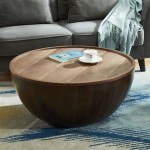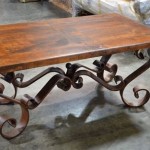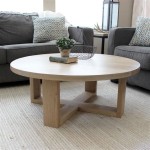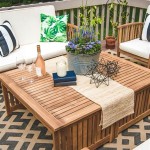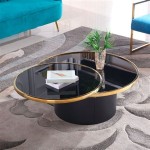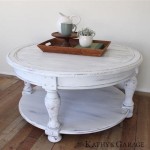How Tall Should An End Table Lamp Be?
Selecting the appropriate height for an end table lamp is a crucial element in interior design, impacting both the aesthetic appeal and functional utility of a living space. Determining the ideal height requires careful consideration of various factors, including the height of the end table, the surrounding furniture, and the intended purpose of the lamp. An improperly sized lamp can disrupt the balance of a room, rendering it visually jarring and less effective for tasks such as reading or ambient lighting.
The primary goal when choosing an end table lamp is to achieve a harmonious balance between the lamp and its environment. It should neither overwhelm the end table nor appear dwarfed by the surrounding furniture. The light emitted should also be at a comfortable level for the user, avoiding glare while providing sufficient illumination for the intended activities. Finding the right height is therefore a multi-faceted consideration that requires a systematic approach.
The Importance of Proportion and Scale
Proportion and scale are fundamental principles in interior design, playing a significant role in creating visually pleasing and balanced spaces. In the context of end table lamps, proportion refers to the relationship between the lamp's height and the height of the end table, while scale concerns how the lamp relates in size to the surrounding furniture, particularly the sofa or chairs it accompanies. A lamp that is disproportionately large or small for its end table will likely disrupt the visual harmony of the room.
A general guideline suggests that the total height of the end table and the lamp together should be approximately the same height as, or slightly lower than, the arm of the adjacent sofa or chair. This rule of thumb ensures that the light source is positioned at a comfortable reading level and that the lamp does not appear awkwardly placed. However, this is not a rigid rule and may need adjustments based on specific design preferences and the overall style of the room.
To determine the ideal lamp height, one should first measure the height of the end table. This measurement serves as a baseline for calculating the appropriate lamp height. A common recommendation is to choose a lamp that, when combined with the end table, results in a total height of approximately 58 to 64 inches. This range typically positions the bottom of the lampshade at eye level for someone sitting nearby, effectively minimizing glare and optimizing light distribution for tasks like reading.
Furthermore, the diameter of the lampshade should be proportional to the base of the lamp. A shade that is too small can make the lamp appear top-heavy, while a shade that is too large can overwhelm the base. A general rule of thumb is that the shade's diameter should be roughly two-thirds the height of the lamp base. However, personal preference and the specific design of the lamp should also be considered. A wider or differently shaped shade may be desired for stylistic reasons or to better diffuse light throughout the room.
Beyond the quantitative measurements, it is imperative to consider the overall aesthetic of the room. In a more contemporary setting, a taller, slender lamp might be appropriate, while a more traditional room might call for a shorter, more ornate lamp. The lamp's style should complement the existing décor and furniture, enhancing the overall cohesiveness of the space. Careful consideration of these aesthetic factors will ensure that the lamp not only meets functional needs but also contributes to the visual appeal of the room.
Considering the Intended Use of the Lamp
The intended use of an end table lamp is a key determinant of its ideal height. Lamps primarily used for reading require a different height consideration compared to those intended solely for ambient lighting. A reading lamp needs to provide focused, direct illumination onto the reading material, while an ambient lamp serves to create a soft, diffused glow that enhances the overall mood of the room.
For reading lamps, the bottom of the lampshade should ideally be positioned at eye level when seated. This placement ensures that the light is directed onto the reading material without causing glare or eye strain. As mentioned previously, a total height (end table plus lamp) of 58 to 64 inches generally achieves this optimal reading height. If the end table is particularly short, a taller lamp might be necessary to achieve the correct light level. Conversely, a shorter lamp may suffice if the end table is taller.
The type of lampshade also plays a crucial role in the lamp's functionality. A wider lampshade with a wider bottom opening will diffuse light more broadly, making it suitable for general illumination. A more focused or directional shade, on the other hand, is better suited for reading, as it concentrates the light onto a specific area. The choice of lampshade material also influences the light quality. Lighter materials, such as linen or parchment, allow more light to pass through, creating a brighter ambiance. Darker materials, such as silk or opaque paper, block more light, resulting in a softer, more subdued glow.
For ambient lighting, the height requirement is less stringent. The primary goal is to create a warm and inviting atmosphere. A slightly shorter lamp may be preferable, as it directs light downward, creating a cozy and intimate feel. The shade should also be chosen to diffuse light evenly throughout the room, minimizing harsh shadows. In this case, the lamp's style and design become more important, as it serves as a decorative element that enhances the overall ambiance of the space.
Furthermore, consider the placement of the end table relative to the seating area. If the end table is positioned further away from the sofa or chair, a taller lamp might be needed to provide adequate illumination for reading. Conversely, if the end table is close to the seating area, a shorter lamp might be sufficient. The distance between the lamp and the user should be factored into the height calculation to ensure optimal light distribution.
Considering Style and Aesthetics
While functionality is paramount, the style and aesthetics of an end table lamp must also be considered. The lamp should complement the existing décor and furnishings in the room, contributing to a cohesive and visually appealing design. The choice of lamp style, material, and finish should align with the overall aesthetic of the space, whether it is contemporary, traditional, minimalist, or eclectic.
In a contemporary setting, sleek and minimalist lamps with clean lines and simple shapes are often preferred. These lamps may feature metal finishes, such as brushed nickel or chrome, and may incorporate modern materials like glass or acrylic. The lampshades are typically simple and understated, often made of linen or a similar material. The overall effect is one of understated elegance and sophistication.
In a traditional setting, more ornate and decorative lamps are often appropriate. These lamps may feature carved details, intricate patterns, and classic materials like brass, wood, or ceramic. The lampshades may be more elaborate, with decorative trims, pleats, or ruffles. The goal is to create a sense of timelessness and elegance, evoking a sense of tradition and heritage.
For a minimalist aesthetic, simplicity is key. Lamps with clean lines, neutral colors, and minimal ornamentation are preferred. The focus is on functionality and practicality, with the lamp serving its purpose without drawing undue attention. The materials are typically simple and understated, such as metal, wood, or glass. The lampshade is usually plain and unadorned, made of linen or a similar material.
In an eclectic setting, the possibilities are endless. The key is to create a cohesive look by mixing and matching different styles, materials, and finishes. The lamp can serve as a focal point, adding character and personality to the room. Experimentation is encouraged, but it is important to maintain a sense of balance and harmony. The lamp should complement the other elements in the room, creating a unique and personalized space.
Beyond the overall style, the lamp's finish should also be considered. A metallic finish can add a touch of glamour and sophistication, while a wooden finish can create a warm and inviting feel. A ceramic finish can add texture and interest, while a glass finish can create a sense of lightness and airiness. The choice of finish should complement the other elements in the room, contributing to a cohesive and visually appealing design. The color of the lamp, including the base and the lampshade, should also be carefully considered. Neutral colors, such as white, beige, or gray, are versatile and can easily blend with any décor. Bold colors, such as blue, green, or red, can add a pop of color and personality to the room. The color should complement the other colors in the room, creating a harmonious and balanced palette.

30 Table Lamps Sources What Size To Get Laurel Home

How To Choose The Right Table Lamp Height Color Style Fine Home Lamps

How To Choose The Correct Lamp Size Guide Front Door

Our 3 Best Tips When Choosing A Bedside Table Lamp Let S Revamp Property Styling

Rules For Picking An End Table 3 Fool Proof Styling Formulas A Billion Options Jk It S Only 90 Emily Henderson

Home Decor 101 How To Decorate End Tables The Turquoise

Brightech Madison 56 In Black Narrow End Table With Built Led Lamp White Shade Wireless Charging Station And Usb Port 75 Jnhm Gfkt The Home Depot

Trademark 58 In Dark Brown Indoor End Table Floor Lamp With Storage Shelf And Usb Charging Port 811080cvx The Home Depot

Regency Hill Edgar 29 Tall Curved Urn Traditional End Table Lamp Brown Broe Finish Single Living Room Bedroom Bedside Nightstand House Office Target

Atamin Ava 59 End Table With Charging Station Floor Lamp Bedside Nightstand Usb C Power Black Com
Related Posts

